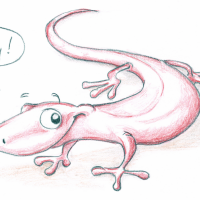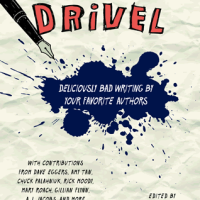Last time, some of you may remember, we were discussing the lack of villains in the films of Hayao Miyazaki. Hopefully by now you even may have seen some of these films for yourself.
But as a refresher let us review the stock Miyazaki storyline: A bratty young woman on the cusp of adolescence is cut off from her parents or her family situation and must find her way back home. Along the way she will come into contact with a boy about her own age, an ambitious dreamer, usually an orphan, who will help our heroine find her way back. And while our young heroine will appear unchanged on the outside to both family and friends, on the inside she will have grown as a person and become stronger and more able to handle whatever life has to throw at her; though by story’s end she will also be saddened, even a little disillusioned, by the outsize effort that has been required of her.
Now I would like to discuss the most recent novel by Richard Ford, Canada, and the ways in which one artist’s approach to ‘bad guys’ in his story can be so very different from another’s.
In the story that it tells, Canada is remarkably similar to many of the films of Hayao Miyazaki: a teenaged boy is cut off from his family situation and tries to find his way home—only in his case there is no home to return to. However, and in contrast to Miyazaki’s work, there is a very clear bad guy who drives the second half of the narrative, and who brings about the requisite change in our hero that allows him to complete the journey that is the plot of the novel, as well as his life.
Like any good story, the stakes for the protagonist have to be high, as well as clearly stated, and Ford achieves all this in his opening paragraph:
First, I’ll tell you about the robbery our parents committed. Then about the murders, which happened later. The robbery is the more important part, since it served to set my and my sister’s lives on the courses they eventually followed. Nothing would make complete sense without that being told first….
And with that irresistible opening Ford is off and running with his equally irresistible story about the fall-out that occurs to a twin brother and sister whose parents take it into their minds to rob a rural farm bank to help keep their family afloat after hitting a rough patch economically.
Ford tells stories the old-fashioned way. His stories have a clear beginning, middle, and end, like the traditional three-act drama. We are rather formally introduced right from the start to the main characters, their backgrounds, family history, their present circumstances, and what brought them to said circumstances. But from this leaping-off point we are told a conventional caper tale with the most unconventional criminals one could imagine.
Bev (the father) and Geneva (the mother) Parsons are an odd couple living in Great Falls, Montana, who hatch an odd plan to rob a ‘national’ bank because, or so they think, if they steal less than ten thousand dollars the federal government will make good on the depositors’ losses, resulting in a ‘victimless’ crime.
But as Ford settles into his story, we see that of course there are victims in any crime, and in this case Bev and Geneva—and eventually their two kids—are the biggest victims of all.
And when it all goes south—SPOILER ALERT!!—our hero and his twin sister, still only in their teens, are sent careening their separate ways into the larger world, without hope or parental protection, to seek their own fortunes, with our hero ending up in the country of the title, a few hundred miles north of where the story began.
It is there in the land of polite people and a most impolite national sport (i.e., hockey) that our hero meets a real villain, not the pretend-villains his parents briefly became.
Arthur Remlinger is a straight-up bad guy who possesses no redeeming qualities save for an elite education and a suave personal style and a knack for fancy dress. An American with a shady background, Remlinger owns a small hotel in the tiny (fictional) town of Fort Royal, Saskatchewan. His business is providing lodgings and drink to visiting hunters, or ‘sports,’ as he calls them.
But Remlinger also provides other, mostly vague ‘entertainments’ to the sports, most of whom are men up visiting from the States, including illicit gambling and the company of a couple of Filipino girls who charge by the hour.
The novel is split pretty much down the middle between the protagonist’s time in Montana before, during, and immediately after his parent’s bank robbery, and the time he spends in Canada in the company of a stranger, Arthur Remlinger, who promises to house him and not turn him over to the authorities in America where he will become a ward of the state and be placed into institutionalized care, a fate the hero dearly hopes to avoid.
What exactly Remlinger’s interest is in our hero is unclear, both to the reader and to our hero, who spends much time trying to tease out this exact thing.
I would urge anyone to read the book, so I won’t say any more to give away what is a most unconventional story. What I will say is that Ford presents us with two types of villains: conflicted ones in the forms of Bev and Geneva Parson, and a driven, unconflicted one in Arthur Remlinger.
The parents are ambivalent about their foray into criminality. They suffer remorse and are loath to resort to violence to cover up their crimes. And the justice system does not hesitate to grind them into dust. The only thing ambivalent about Arthur Remlinger is the exact nature of his past crimes.
As our hero, in desperate need of a father figure, attaches himself and his affections to this debonair cipher, he manages to piece together his history through numerous sources, not all of whom are reliable.
At this point, perhaps it is necessary to define our terms. What makes a villain a villain?
A villain does bad things, that goes almost without saying, but he is not necessarily evil. A good (I use this term loosely) villain need also be a catalyst. He has to shake things up, move the story along, and he needs to do this for his own selfish reasons; whereas the protagonist, while he might act selfishly at times, must at some point act on interests that include more than his own narrow personal concerns.
Ultimately, a villain’s purpose is to provide contrast to the protagonist, the good guy. Because while evil is easy to define—we all know evil when we see it—it can be difficult to define ‘the good.’
While Remlinger is an indelible character, and a clear bad guy, who increases the tension of the story—once it’s over, in retrospect he doesn’t live on in the mind of this reader (nor of the protagonist) as indelibly as the parents, Bev and Geneva. And if the second half of Canada has any flaw compared to the first half, it is that Remlinger lacks that necessary air of the tragic—something Bev and Geneva Parsons have in spades—to make him live on in the mind.
As has been noted down through the centuries, Satan may be the best thing about Milton’s ‘Paradise Lost,’ but that is only because he is up against such vanilla fare, what with all the heavenly hosts singing ‘Hallelujah’ all the live-long day.
The name of the game for any story-teller is conflict. And it is in the internal push-and-pull of the ambivalent, conflicted villain that the richest conflicts can occur. A straight-up villain we can safely compartmentalize: we know what we can expect from him. An ambivalent, or ambiguous, villain keeps us on our toes.
And in the end it’s always best to keep one’s reader on her toes.



















Oh, and we just watched Howl’s Moving Castle. Loved it! Have more in the Netflix queue. Thanks for the recs!
‘Howl’s Moving Castle’ is probably not the one I would recommend as your first experience of the wonders of Miyazaki, but it is a definitive example of his oeuvre and touches on all his usual themes — including, but not limited to, an interest in magic; intoxication with open, natural vistas; and an obvious disgust/fascination with bodily fluids.
For the ten year-olds in your life you definitely want to start with ‘Our Neighbor Totoro’ or ‘Porco Rosso.’ Also, ‘Castle in the Sky,’ which is similar to ‘Howl’s Moving Castle’ as much as it isn’t.
We’ve got “Castle in the Sky” and “Our Neighbor Totoro” coming up next. Will put “Porco Rosso” in the queue.
Yes, and Howl’s bodily fluids were an interesting focus. Billy Crystal was his usual funny self as Calcifer, the fire (and Howl’s heart). So strange that these films were NEVER suggested to us by the magical Netflix suggestion wizard. Makes me wonder how many more wonderful movies we’re missing that are suitable for children.
Thanks, Wes!
Thanks for the spoiler alert, Wes! I’ve just started this book for the second time. I still seem to have a tough time getting past the first 50 pages of his books. I can’t quite figure out why. I’m going back in again, though, because I want to finish this one! I think your analysis will help me appreciate it a little more. Thanks!! Happy New Year!
When it comes to Richard Ford, you can’t go wrong with the short stories.
As for the novels, Ford is all about the slow build. Like erecting a house, after he carefully builds his foundation he moves on to the next storey. And the next. He is one of those writers who rewards the determined, methodical reader. It would be a shame to give up after only 50 pages!
Yes, I will put my ADD on hold and finish the novel. Thanks for the reminder that the payoff will be worth it. 😀
Nice analysis, Wes. I appreciated the comparison of ambivalent vs. straight-up villains and how they operate in stories. It’s such a good lesson to keep in mind. And I agree, the opening to Ford’s story is brilliant. Talk about an effective hook!